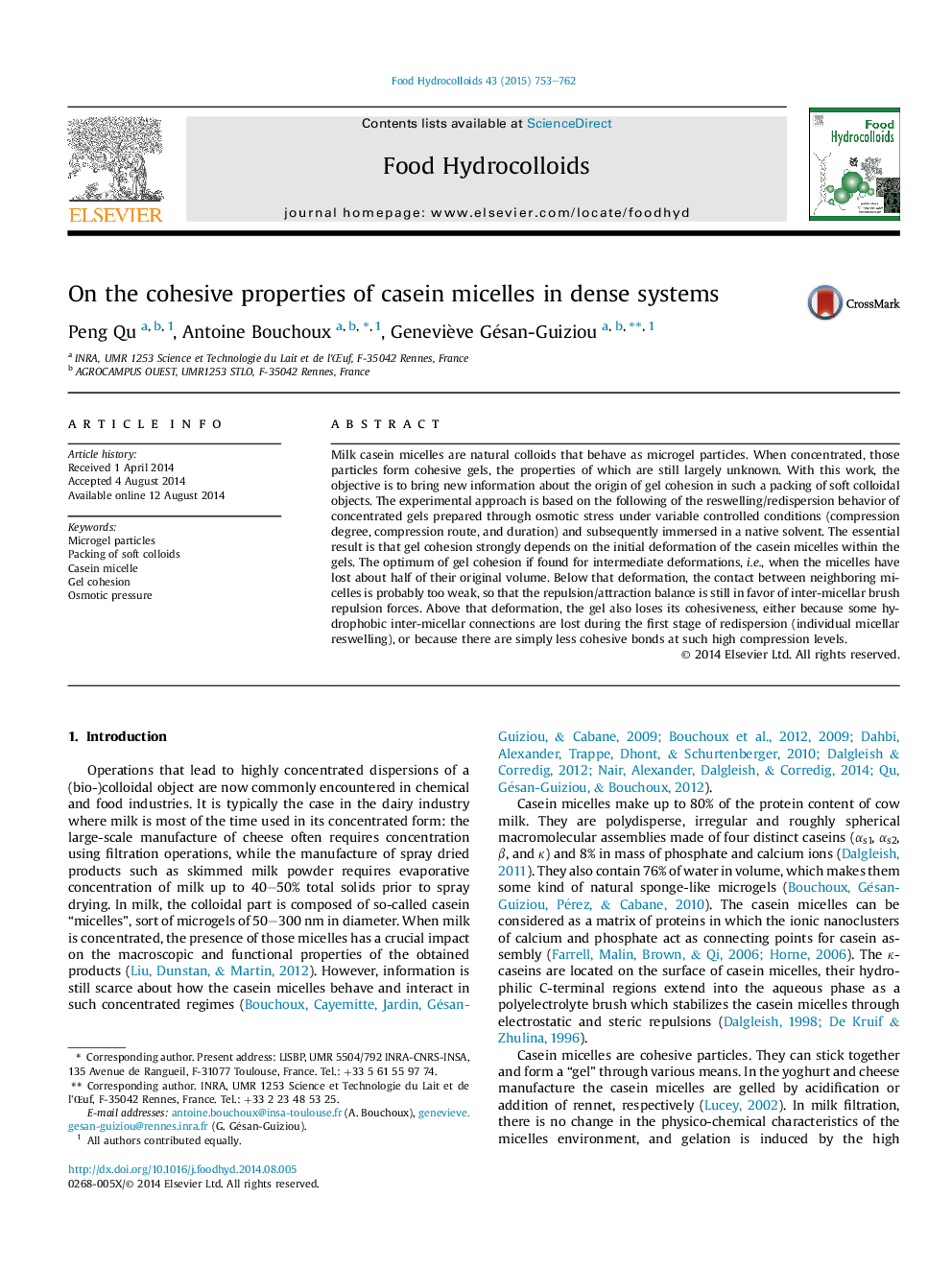| Article ID | Journal | Published Year | Pages | File Type |
|---|---|---|---|---|
| 604706 | Food Hydrocolloids | 2015 | 10 Pages |
•When concentrated, casein micelle dispersions turn into cohesive gels.•Gel cohesion is due to surface interactions between neighboring micelles.•Sufficient compression force is necessary for efficient bonds formation.•Gels made at too high a compression are not stable upon reswelling.
Milk casein micelles are natural colloids that behave as microgel particles. When concentrated, those particles form cohesive gels, the properties of which are still largely unknown. With this work, the objective is to bring new information about the origin of gel cohesion in such a packing of soft colloidal objects. The experimental approach is based on the following of the reswelling/redispersion behavior of concentrated gels prepared through osmotic stress under variable controlled conditions (compression degree, compression route, and duration) and subsequently immersed in a native solvent. The essential result is that gel cohesion strongly depends on the initial deformation of the casein micelles within the gels. The optimum of gel cohesion if found for intermediate deformations, i.e., when the micelles have lost about half of their original volume. Below that deformation, the contact between neighboring micelles is probably too weak, so that the repulsion/attraction balance is still in favor of inter-micellar brush repulsion forces. Above that deformation, the gel also loses its cohesiveness, either because some hydrophobic inter-micellar connections are lost during the first stage of redispersion (individual micellar reswelling), or because there are simply less cohesive bonds at such high compression levels.
Graphical abstractFigure optionsDownload full-size imageDownload as PowerPoint slide
